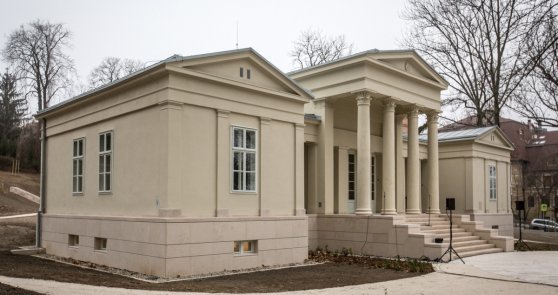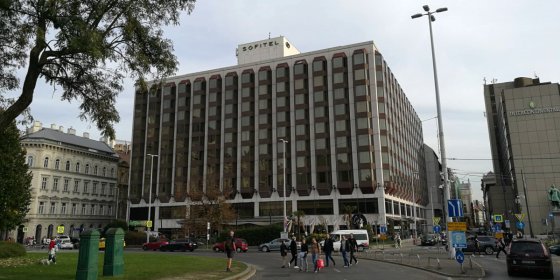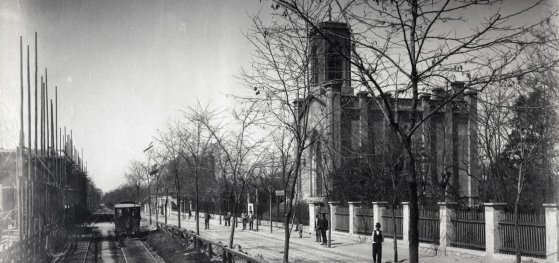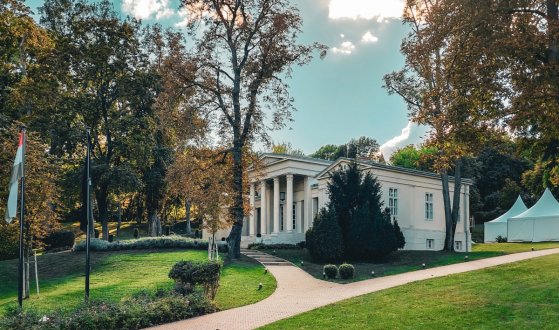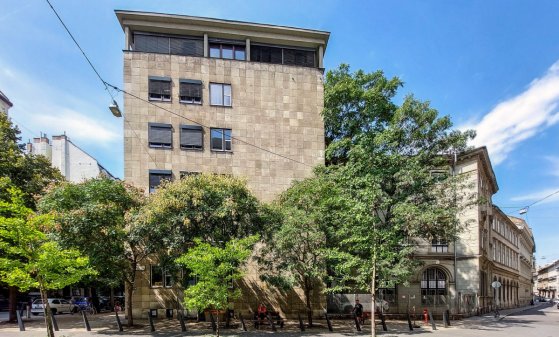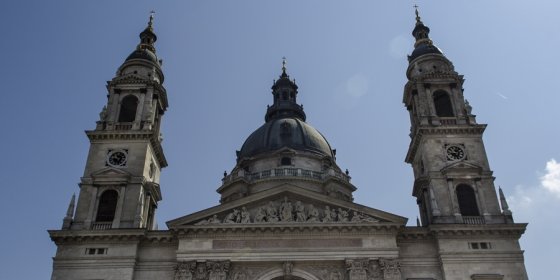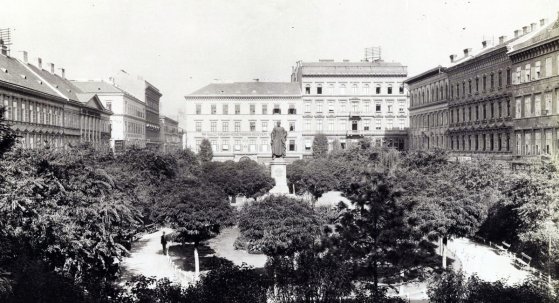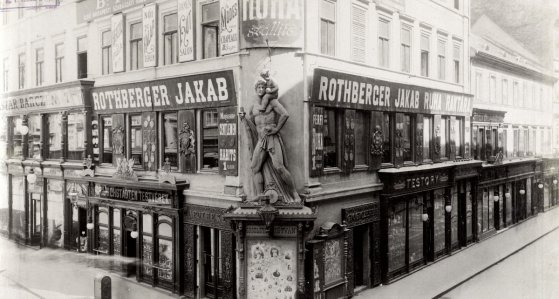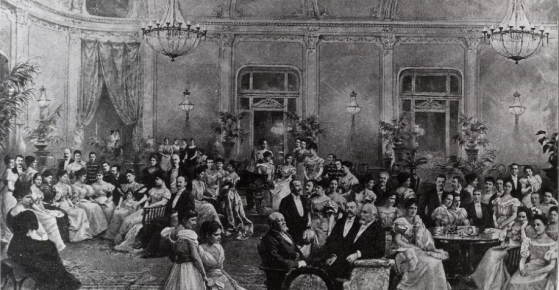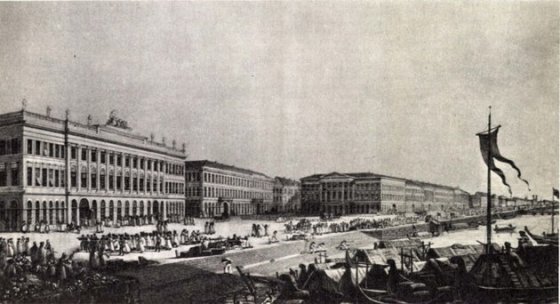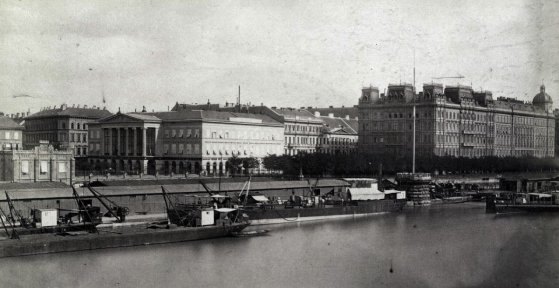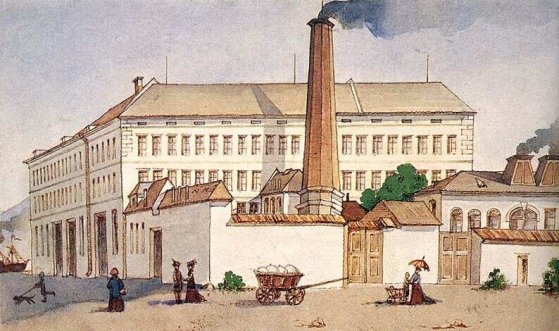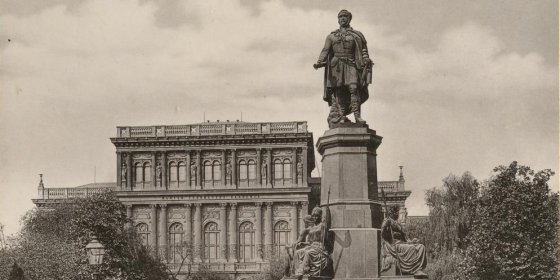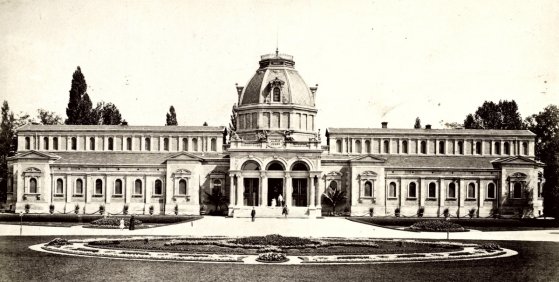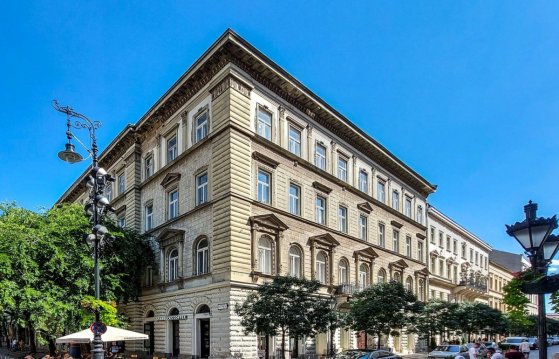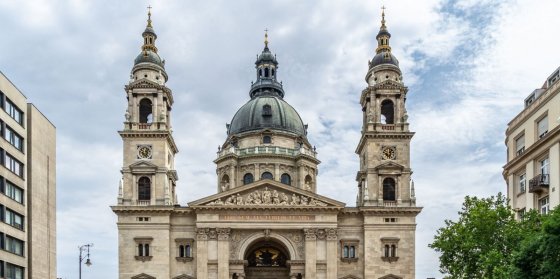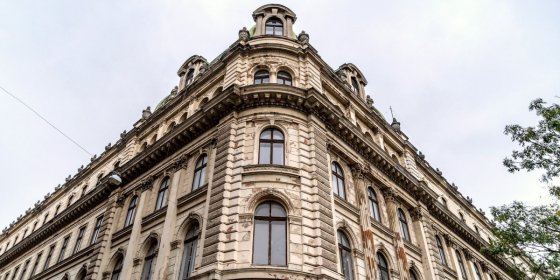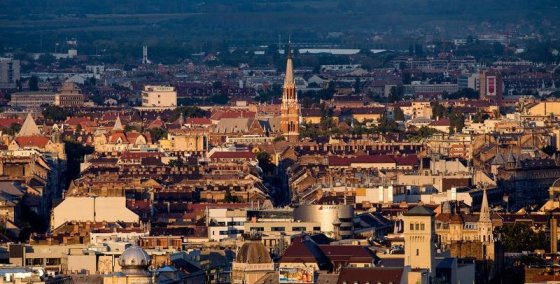 The „intertwined history” of the bridges and the city of Budapest
Which ideas and events have shaped the fate of bridges of Budapest and the cityscape? Alongside many other interesting facts, this question is also answered this newly published book by the Budapest City Archives, which introduces the history of bridges in Budapest.
The „intertwined history” of the bridges and the city of Budapest
Which ideas and events have shaped the fate of bridges of Budapest and the cityscape? Alongside many other interesting facts, this question is also answered this newly published book by the Budapest City Archives, which introduces the history of bridges in Budapest.
József Hild
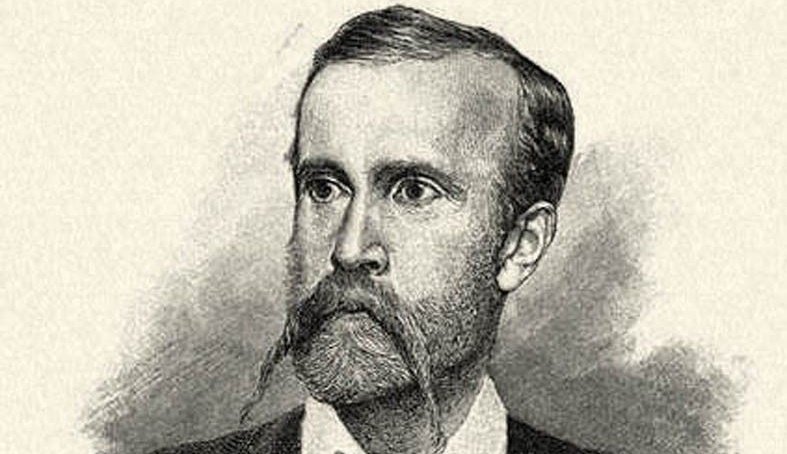 Imre Madách, born 200 years ago, became a writer in Pest
Imre Madách, born 200 years ago, became a writer in Pest
January 28, 2023 at 9:00 AM
The young Imre Madách lived in Pest for three years. While completing his law studies at the University of Pest, he also got involved in social and cultural life. He regularly visited the performances of the Hungarian Theatre of Pest, attended concerts at the National Casino, but the highly educated young man also learned to paint, fence, and play the piano in the capital. His first volume was published here. Pestbuda remembers Imre Madách, who was born 200 years ago.
Following József Hild
November 18, 2022 at 6:30 PM
Classicist houses in the centre of Pest, elegant villas on Svábhegy, and the outstanding works of a great Hungarian architect: those interested can get to know the legacy of József Hild in the coming weeks, through the buildings they can find out what the era was like in which he created, how Pest and Buda developed during the booming period of Reformation in a special atmosphere.
The hotel on the site of the former Lloyd Palace is being rebuilt
October 12, 2022 at 9:00 AM
Due to the ravages of World War II, Pest's Danube Promenade lost its former unique atmosphere. Modern hotels have been built in place of the old row of palaces, and the Atrium Hyatt has stood on the site of the destroyed Lloyd Palace since 1982, which today bears the name Sofitel. The hotel will soon receive a new facade, the building permit became final at the beginning of October. It can be read in the permit that the building will get a new level. Design renders have not yet been released.
A romantic jewellery box in Zugló - The construction of the Hermine Chapel began 180 years ago
October 10, 2022 at 5:00 PM
One of the typical buildings on Hermina Road, which marks the eastern border of City Park, is the small Hermina Chapel. Despite its size, it has a very decisive role, as not only the road was named after it, but also the district where it stands: Herminamező. In keeping with its style, its story is also romantic, containing both beauty and tragedy. The foundation stone of the small chapel was laid just one hundred and eighty years ago.
The first gems of the Hegyvidék - József Hild's villas in Buda
September 11, 2022 at 10:30 AM
More and more people moved from Pest, which began to grow in the first half of the 19th century, to the mountains of Buda, because instead of traffic and crowding, calmness and fresh air awaited them there. The larger plots also made it possible to build free-standing villas with gardens, many of which were designed by the most employed architect of the period, József Hild.
The building of the ELTE Faculty of Law on Kecskemét Street will be renovated - The Csekonics Palace once stood on the site
July 7, 2022 at 7:30 PM
Building B of the ELTE Faculty of Law is at 10–12 Kecskeméti Street, located at and connected to Magyar utca 31–33. The monument complex is now being renovated and modernized. A famous building once stood on the plot, the luxurious palace of the wealthy Csekonics.
The dome of St. Stephen's Basilica went up in flames 75 years ago
June 23, 2022 at 11:30 AM
The construction of the largest church in Budapest took a very long time in accordance with its size, it filled the second half of the 19th century and even extended a little into the 20th century. It was finished in 1905, but forty years later a scaffolding was put up again: the damage caused by World War II had to be repaired. However, the renovation caused even more trouble, with an accidental fire burning the entire dome.
The end of the Salt Office in Pest - This is how József Nádor Square was born
June 7, 2022 at 11:00 AM
The Danube is still an important trade route to this day, but in the first half of the 19th century the navigable waterway was even more important. Among other things, salt was transported on it, for the storage of which and the administration of the related taxes, a Salt Office was erected on the banks of the Danube in Pest. South of it, in the building of the Thirtieth Office, customs duties for commercial goods could be handled. However, the development of the city forced their demolition, and the József Nádor Square was established in its place.
The Nagy Kristóf House was a real business centre in contemporary Pest
May 26, 2022 at 9:00 AM
The former house at 6 Váci Street is named after the huge statue of St. Christopher of the pharmacy in it, after which the area in front of the building was called Kristóf Square. However, according to the plans of József Hild, the building, which was expanded to two and then three floors, housed several other shops in addition to the pharmacy, including the fashion store of the clothing retailer Jakab Rothberger, which also won the title of imperial and royal court supplier.
Studio in the Inner City - The Strelisky photographer dynasty in Budapest
April 20, 2022 at 10:00 AM
Lipót Strelisky was one of the first to deal with daguerreotypes in Budapest in the 1840s. In his studio in Dorottya Street, he photographed the politicians, aristocrats and artists of the age. His son, Sándor Strelisky, who died a hundred years ago, was the first photographer in Hungary to take multi-character photographs with a special technique. Strelisky photos are invaluable today and help us learn about Budapest's past.
An impressively rich oeuvre of an architect - József Hild died 155 years ago
March 7, 2022 at 10:00 AM
One of the most famous figures of Hungary in the 16th century was József Hild. He fully deserved his reputation, as the cityscape of Pest, which was booming, was largely determined by his work. However, the unbroken development also caused the destruction of most of his works: many of his inner city buildings were demolished to give way to newer and bigger ones. Fortunately, some of his buildings still stand today and promote the talent of their designer.
Rising houses - How did Budapest's development into a world city begin?
March 1, 2022 at 9:00 AM
As a result of the Compromise of 1867, dizzying economic development began in Hungary. This was particularly striking in the capital, which in a few decades has evolved from a medium-sized settlement to one of the largest cities in Europe. People flocked to Budapest from the countryside, and more and more houses were built to give the new townspeople a place to live.
The first steam mill in Pest started significant industrial development - the József Rolling Mill started operating 180 years ago
September 22, 2021 at 9:00 AM
Today it is difficult to imagine, but once the first steam mill in Pest was built and operated in Lipótváros, in the area bordered by today's Bálint Balassi - Béla Stollár - Falk Miksa and Balaton Streets, which started operating on 22 September 1841. However, the József Hengermalom [Rolling Mill] was more than a simple mill. The modern plant established on the initiative of István Széchenyi was not financially successful, but as a result the milling industry and the machine industry also started to develop significantly. Pest in the second half of the 19th century became a major power of the milling industry.
Stations of a Life - The memory of István Széchenyi, born 230 years ago, in the square named after him
September 21, 2021 at 9:00 AM
The year 2021 can also be called the Széchenyi Year, as Hungarians celebrate the 230th anniversary of the count's birth on 21 September. In addition, there is a square in Pest that had been named after the biggest Hungarian for 10 years, and most of its corners are related to a certain stage of the count's life or patriotic deeds. It is the square at the Pest end of the Chain Bridge, which István Széchenyi may have known as Kirakodó Square.
Diana, Margit, Erzsébet and Hungária - Forgotten baths from the past of Budapest
August 29, 2021 at 8:30 AM
This summer is slowly coming to an end, and the sudden cooler weather is no longer good for going to the beach. Fortunately, Budapest also has many baths, which we can visit even in cooler weather; it is enough to think of Széchenyi, Rudas or Gellért. Unfortunately, there are also a good number of baths that we can no longer enjoy today, even though they were architecturally significant as well. Here are 3 + 1 baths from the past of Budapest!
The Neo-Renaissance facade hides a classicist interior in Hercegprímás Street, Lipótváros
July 31, 2021 at 10:00 AM
The house, built in 1844 in the classicist style by Hild József, remodelled in the neo-Renaissance style at the beginning of the 20th century, is now one of the most beautiful buildings in the square surrounding St. Stephen's Basilica at 7 Hercegprímás Street. The facade itself is special with the decorations alternating from floor to floor, and the cosy inner courtyard has retained its classicist touches. What overshadows the history of the palace is the history of the former owners.
Fifty years of construction – Saint Stephen's Basilica opened 115 years ago
December 1, 2020 at 3:00 PM
St. Stephen's Basilica is the largest church in Budapest. Today, it is one of Budapest's most famous monuments of the capital, thanks to the work of Miklós Ybl. However, it also features prominently in the oeuvre of two other architects: József Hild started its design, while József Kauser finished its construction. Construction lasted an astounding 55 years, and the church was finally consecrated 115 years ago, on 19 November 1905.
Stunning buildings stand deserted around Budapest
November 10, 2020 at 10:00 AM
The Hungarian capital is filled with beautiful buildings. Houses, public institutions, museums, hospitals, the list goes on. Nevertheless, several impressive buildings that once fulfilled important tasks stand empty in modern Budapest, waiting for a new tenant to return them to their former glory. This list collects five abandoned buildings found in Budapest.
Zugló turns 85 – A district of palaces, villas and housing estates
October 9, 2020 at 3:00 PM
Established ninety years ago, Zugló became an independent district 85 years ago. The 14th District connects the city centre with the outer parts of the city, and its role is reflected in its architecture. Beautiful villas built by artists stand alongside stunning school buildings, monuments and the headquarters of various institutions in the styles of historicism and Art Nouveau and these were joined in the 1970s by housing estates.
More articles
 The „intertwined history” of the bridges and the city of Budapest
Which ideas and events have shaped the fate of bridges of Budapest and the cityscape? Alongside many other interesting facts, this question is also answered this newly published book by the Budapest City Archives, which introduces the history of bridges in Budapest.
The „intertwined history” of the bridges and the city of Budapest
Which ideas and events have shaped the fate of bridges of Budapest and the cityscape? Alongside many other interesting facts, this question is also answered this newly published book by the Budapest City Archives, which introduces the history of bridges in Budapest.
 The Bridge Report, which brought a turning point in the history of Budapest
A travel report that changed the history of Pest and Buda, as well as Hungary. The little book contributed to the change of half a thousand years of legal customs and the implementation of an investment of unprecedented size and technical quality. This book was The Bridge Report [Hídjelentés in Hungarian].
The Bridge Report, which brought a turning point in the history of Budapest
A travel report that changed the history of Pest and Buda, as well as Hungary. The little book contributed to the change of half a thousand years of legal customs and the implementation of an investment of unprecedented size and technical quality. This book was The Bridge Report [Hídjelentés in Hungarian].
 Drama on the university wall - The heroic monument was planned 95 years ago
In the constant hustle and bustle of the Egyetem Square in Pest, the students may not even notice the monument that decorates the short section of wall between the church and the central building of ELTE. However, it commemorates their predecessors, the heroes who fought for their country in World War I, and those who heroically helped them. The first design of the dramatically collapsing soldier was born in 1928, ninety-five years ago.
Drama on the university wall - The heroic monument was planned 95 years ago
In the constant hustle and bustle of the Egyetem Square in Pest, the students may not even notice the monument that decorates the short section of wall between the church and the central building of ELTE. However, it commemorates their predecessors, the heroes who fought for their country in World War I, and those who heroically helped them. The first design of the dramatically collapsing soldier was born in 1928, ninety-five years ago.

